Venice Architecture Biennale 2021: a year late but somehow right on time
Hashim Sarkis' main show ‘How Will We Live Together?' at the 2021 Venice Architecture Biennale opens a year later than originally expected, but ponders on questions that are more timely than ever
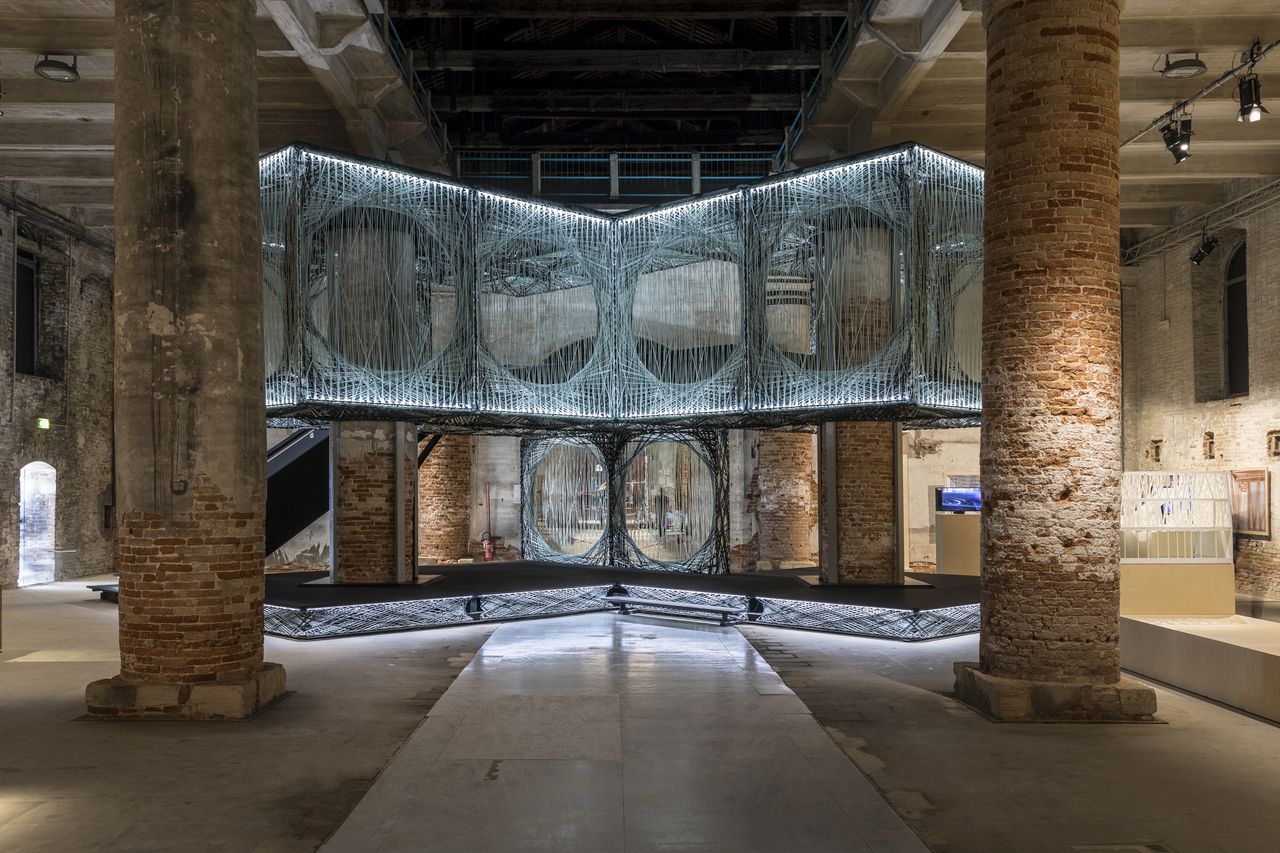
Venice in the pandemic is a different city, a quiet place with children playing in the narrow streets, families dining outside and an empty St. Mark’s Square. Despite this, as the 17th Venice Architecture Biennale, curated by Hashim Sarkis, prepared to open to the public there was the sense of something undoubtedly special; an international coming together at a time when many of us have to remain within borders.
How Will We Live Together?
Sarkis' biennale has been postponed twice. Finally opening on 22 May 2021, the Professor and Dean of the School of Architecture and Planning at MIT and founder of Hashim Sarkis Studio posed the question How Will We Live Together?
The theme has only gained resonance as the world has been forced to come together to find solutions or suffer the direst of consequences. The show offered answers to this question, ‘As Diverse Bodies', ‘As New Households', ‘As Emerging Communities’ looking at social theory, forgotten craft combined with technological innovation and the speculative, even interplanetary.

A. I. Toys Shapes and Ladders: Battles of Bias and Bureaucracy Maternity Menswear, 2020. courtesy: La Biennale di Venezia
How are we to live alongside one another if we do not consider what makes each of us uniquely diverse? In As Diverse Bodies, Sarkis proposes design for new bodies in the shape of a male maternity suit for trans men by artist Ani Liu. This sits alongside the installation Your Restroom is a Battleground, by Matilde Cassani, Ignacio G. Galán and Iván L. Munuera, which tackles issues of the fundamental rights around private, public and shared toilet facilities around the world from trans rights to sanitation. If we don’t accept our diverse needs on this fundamental level when it comes to the spaces we use and inhabit, how are we to co-exist harmoniously?
He then looks at another aspect of the architecture of our bodies, their biology. By presenting the biological systems alongside technological ones Hashim Sarkis looks at them not as opposing forces but as complementary and intertwined. Magic Queen by interdisciplinary architecture and transmedia practice MAEID’s is an ‘autonomous techno-organic environment', an evolving landscape resembling something between a huge anthill and a fantasy planetary landscape sits next to the satirical work by Tim Parsons and Jessica Charlesworth Catalog for the Post Human which includes imagined objects such as a daily micro dosing kit.
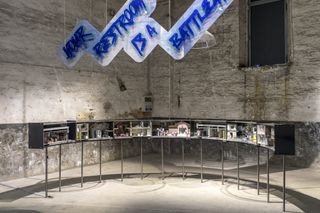
Matilde Cassani; Ignacio G. Galán; Ivan L. Munuera; Joel Sanders;Your Restroom is a Battleground, 2021. courtesy: La Biennale di Venezia
Working from the inside outwards we move from the architecture of our bodies onto our households, kicking off with changing demographics. The exhibition is deliberately diverse not solely out of a desire to be inclusive but because, in Sarkis’ eyes, the greatest innovations in architecture are no longer solely coming out of The West in our post-internet world. He highlights this with KEJA by Osbourne Macharia, inspired by the millennial creatives working out of slums in Nairobi, facilitated by internet access.
New takes on old ideas
Taking into consideration the post-internet and the post-human Sarkis also takes on the post-biological or should we say super-biological. The biennale overall explores the potential for new takes on old ideas; this could be a return to using timber or a new climate conscious material using an old modular housing model. While there is an eye on the past, when Hashim Sarkis looks to the future it is always with an ambition for a cohesive, universal approach.
In As Emerging Communities Rolex alumni Atelier Masomi explores how colonial systems can be adapted for a more equal present and future – Rolex is also once again exclusive partner and official timepiece for the event, and have a separate pavilion at the Giardini park (it hosts an exhibition focusing on Atelier Masomi founder Mariam Kamara’s plans for a cultural centre in Niamey, Niger).
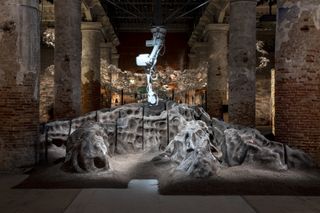
MAEID [Büro für Architektur und transmediale Kunst], Magic Queen [from the Artificial Ecologies series], 2021. courtesy: La Biennale di Venezia
The pandemic: an enforced stop
In another section, he asks us to Inhabit New Tectonics. Refuge for Resurgence by Superflux touches on the impact of the enforced stop of the pandemic and using a dining table as its centerpiece looks at opportunities for coexistence in a post-Anthropocene world. It was essential that Sarkis mix the aspirational with the realised to root the narrative of the exhibition in the context of its theme of togetherness.
One of the most impressive of these projects is Los Angeles’ Sixth Street ‘Ribbon of Light' viaduct replacement in Appealing to Civicness which, when finished promises to alter the city for the better in myriad ways. The exhibition also features the Lot 19 Residential Block, La Défense-Nanterre in Paris by Farshid Moussavi Architects as part of ‘Living Apart Together', a film exploring the impact of the building’s architecture on the community that lives there. Built in a sought-after area of Paris, the building is a mix of highly priced and affordable homes and in its success in many ways exemplifies Sarkis’ philosophy.
Our relationships with our mental and physical health are changing and in combining traditional medicine with technological advancement we are gaining a greater understanding of internationally diverse viewpoints. This need for unity is urgently stated in this exhibition which, without a firm grounding in actuality, would have lost itself in theory and speculation. However, what Sarkis presents is a combination of our radically changing approach to life, a mixture of ancient and modern with an aspirational eye on the future.
Wallpaper* Newsletter
Receive our daily digest of inspiration, escapism and design stories from around the world direct to your inbox.
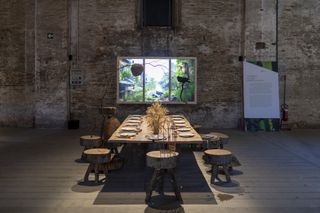
Superflux London, Refuge for Resurgence, 2021. courtesy: La Biennale di Venezia
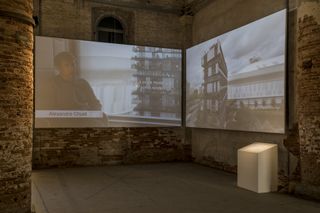
Farshid Moussavi Architecture, The Multistory Residential Block as a Social Platform, 2021. courtesy: La Biennale di Venezia
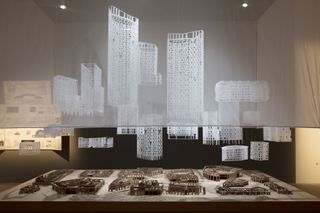
Alison Brooks', Home Ground, a monumental table into which sixteen architectural models are cast as a participatory ‘conversation piece’
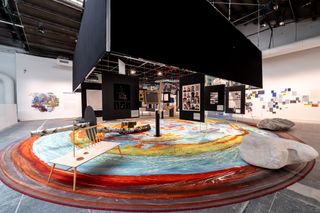
Future Assembly is a collective exhibition in the Central Pavilion, Giardini, which is part of the main show. It is a collaboration between artist Olafur Eliasson and architect Sebastian Behmann’s Studio Other Spaces and six co-designers. The installations explore the answer to the question: What could a multilateral assembly of the future look like? courtesy La Biennale di Venezia
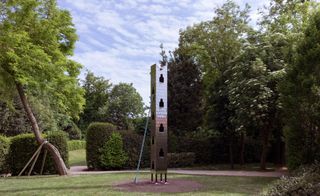
Studio Ossidiana created Variations on a Birdcage, an exploration of the objects through which humans formalize their encounters with birds.
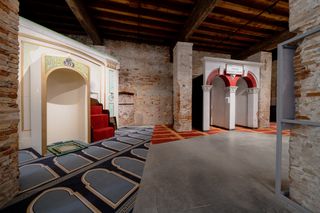
Three British Mosques, Applied Arts Pavilion Special Project at the Biennale Architettura 2021. courtesy La Biennale di Venezia
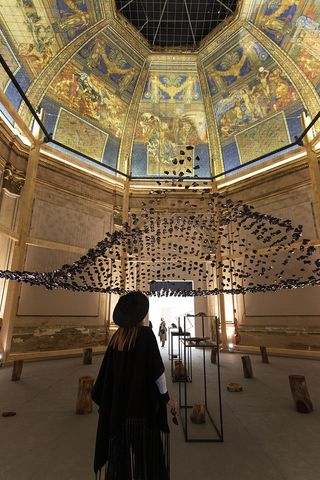
Cave_bureau, The Anthropocene Museum: Exhibit 3.0 Obsidian Rain, 2017, courtesy: La Biennale di Venezia
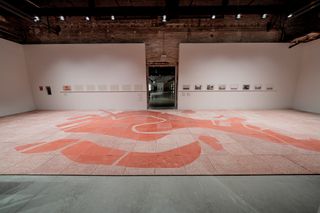
studio L A, City to Dust, 2020–2021. courtesy La Biennale di Venezia
INFORMATION
Amah-Rose Abrams is a British writer, editor and broadcaster covering arts and culture based in London. In her decade plus career she has covered and broken arts stories all over the world and has interviewed artists including Marina Abramovic, Nan Goldin, Ai Weiwei, Lubaina Himid and Herzog & de Meuron. She has also worked in content strategy and production.
-
 Watches & Wonders 2025: preview Richemont’s latest innovations, on show at the Geneva watch fair
Watches & Wonders 2025: preview Richemont’s latest innovations, on show at the Geneva watch fairDiscover eight enticing timepieces from the luxury group, showcased this week at the Geneva fair
By Simon Mills Published
-
 Masters of midcentury modern design and their creations spotlighted in new book
Masters of midcentury modern design and their creations spotlighted in new book‘Mid-Century Modern Designers’ is a new book from Phaidon celebrating those who shaped the period and their notable creations, from furniture to objects
By Tianna Williams Published
-
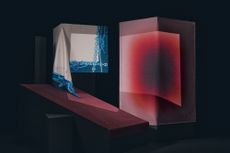 Drafting nine international artists, Gucci’s ‘90 x 90’ project transforms its silk scarf into a creative canvas
Drafting nine international artists, Gucci’s ‘90 x 90’ project transforms its silk scarf into a creative canvasPart of Gucci’s ‘The Art of Silk’ initiative, the project sees nine artists riff on the Italian fashion house’s most memorable motifs, from lush depictions of flora and fauna to its signature horsebit
By Jack Moss Published
-
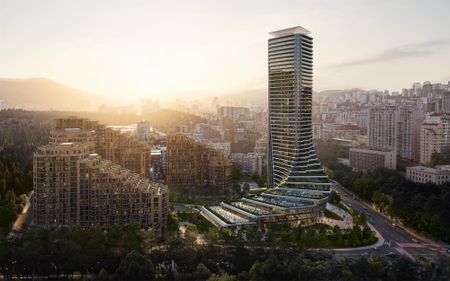 The upcoming Zaha Hadid Architects projects set to transform the horizon
The upcoming Zaha Hadid Architects projects set to transform the horizonA peek at Zaha Hadid Architects’ future projects, which will comprise some of the most innovative and intriguing structures in the world
By Anna Solomon Published
-
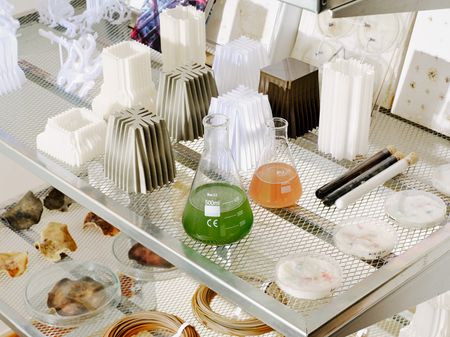 Is biodesign the future of architecture? EcoLogicStudio thinks so
Is biodesign the future of architecture? EcoLogicStudio thinks soWe talk all things biodesign with British-Italian architecture practice ecoLogicStudio, discussing how architecture can work with nature
By Shawn Adams Published
-
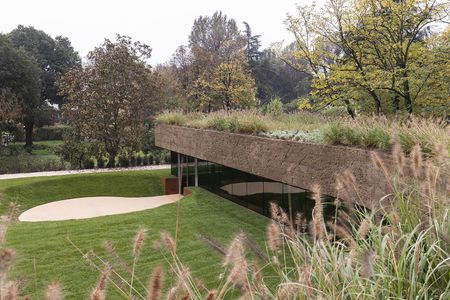 Meet Carlo Ratti, the architect curating the 2025 Venice Architecture Biennale
Meet Carlo Ratti, the architect curating the 2025 Venice Architecture BiennaleWe meet Italian architect Carlo Ratti, the curator of the 2025 Venice Architecture Biennale, to find out what drives and fascinates him ahead of the world’s biggest architecture festival kick-off in May
By Ellie Stathaki Published
-
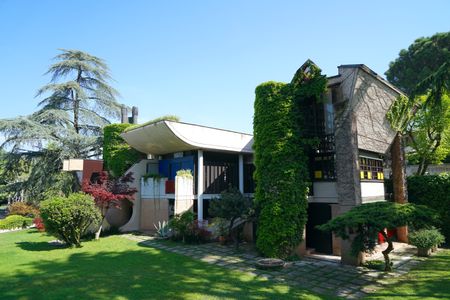 The brutal harmony of Villa Caffetto: an Escheresque Italian modernist gem
The brutal harmony of Villa Caffetto: an Escheresque Italian modernist gemThe Escheresque Italian Villa Caffetto designed by Fausto Bontempi for sculptor Claudio Caffetto
By Adam Štěch Published
-
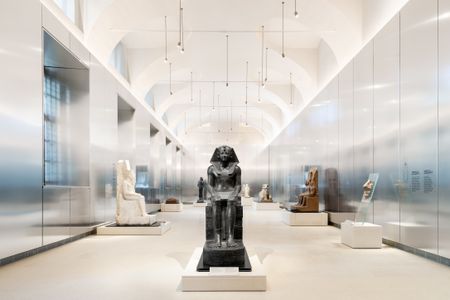 Turin’s Museo Egizio gets an OMA makeover for its bicentenary
Turin’s Museo Egizio gets an OMA makeover for its bicentenaryThe Gallery of the Kings at Turin’s Museo Egizio has been inaugurated after being remodelled by OMA, in collaboration with Andrea Tabocchini Architecture
By Smilian Cibic Published
-
 A floor made of tomato skins? Welcome to the Mutti Canteen by Carlo Ratti in Parma
A floor made of tomato skins? Welcome to the Mutti Canteen by Carlo Ratti in ParmaMutti Canteen by Carlo Ratti is a new, environmentally friendly foodie piece of architecture within Parma's green countryside
By Ellie Stathaki Published
-
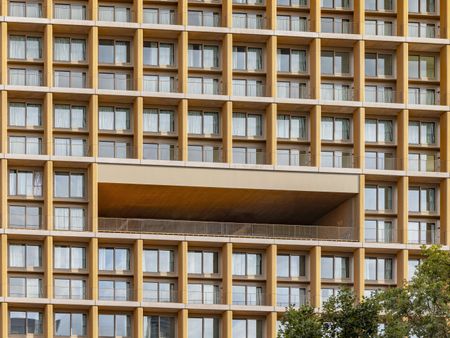 Explore wood architecture, Paris' new timber tower and how to make sustainable construction look ‘iconic’
Explore wood architecture, Paris' new timber tower and how to make sustainable construction look ‘iconic’A new timber tower brings wood architecture into sharp focus in Paris and highlights ways to craft buildings that are both sustainable and look great: we spoke to project architects LAN, and explore the genre through further examples
By Amy Serafin Published
-
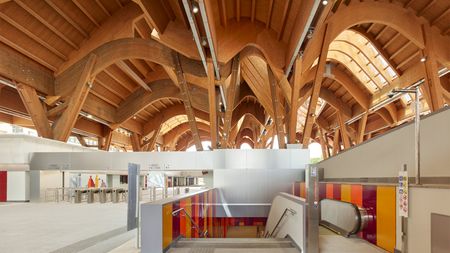 Naples Central Station boasts a wavy, wooden signature roof that is dramatic and sculptural
Naples Central Station boasts a wavy, wooden signature roof that is dramatic and sculpturalNaples Underground Central Station by Benedetta Tagliabue is a work of art that’s inviting and vibrant, matching its dynamic context
By Ellie Stathaki Published